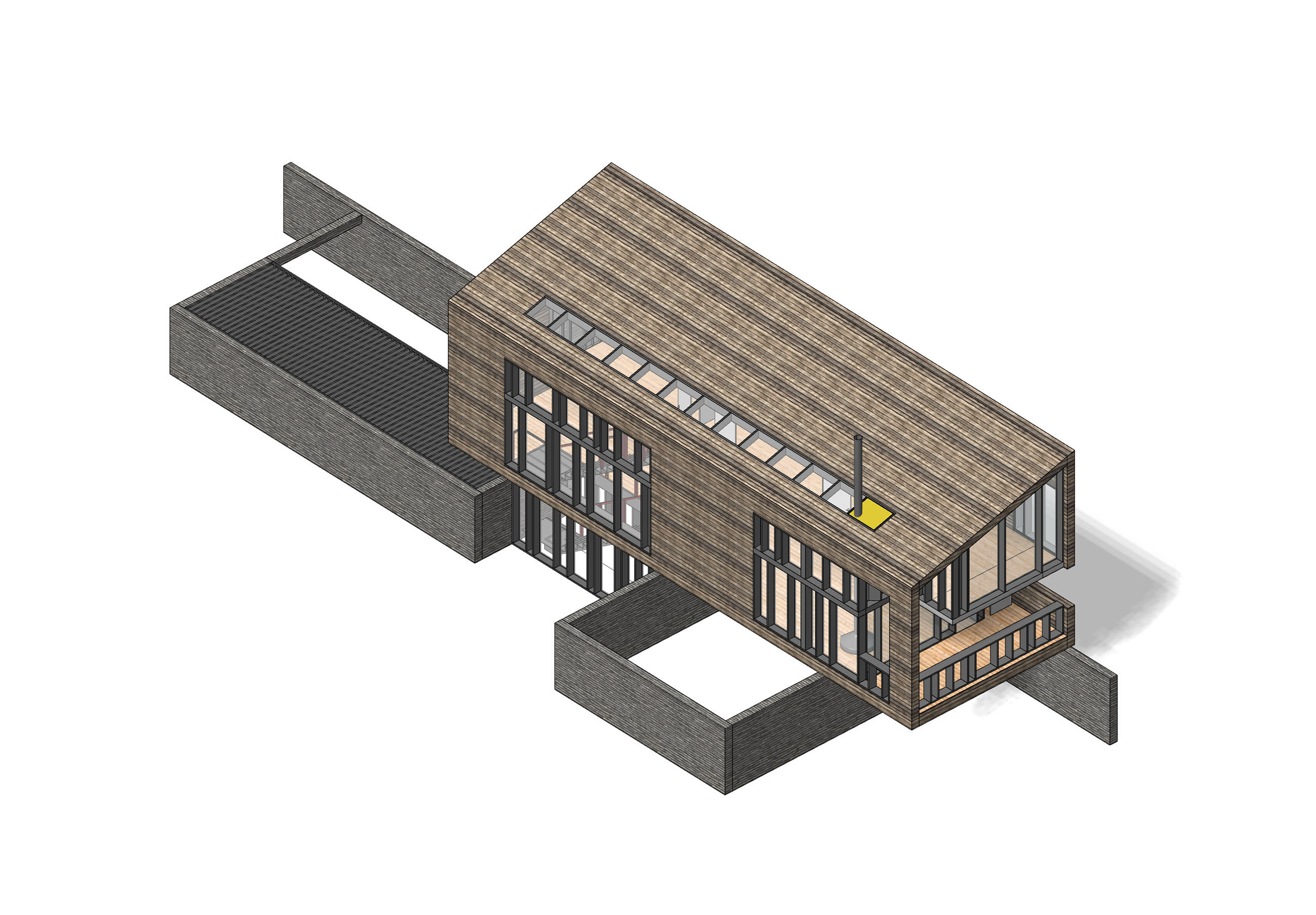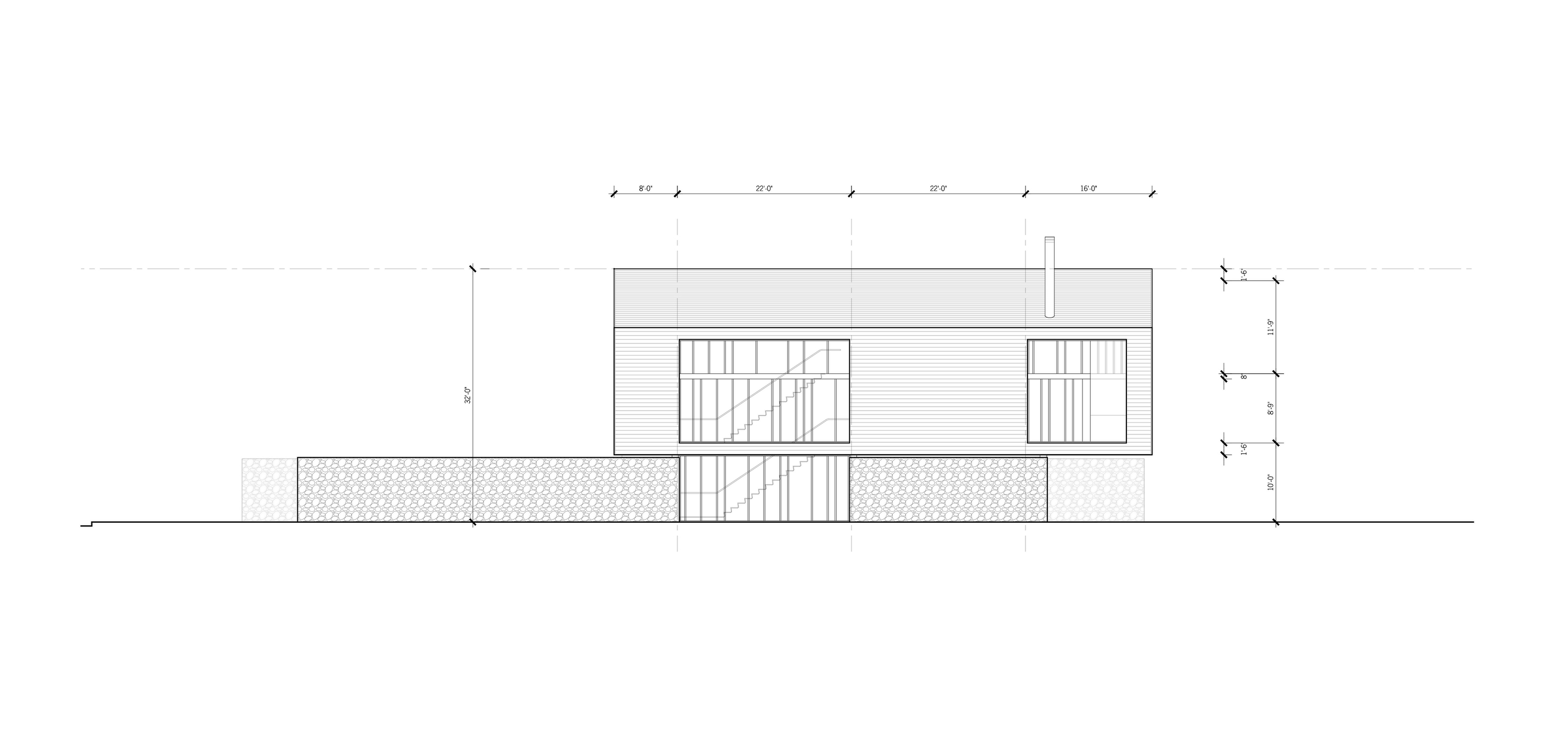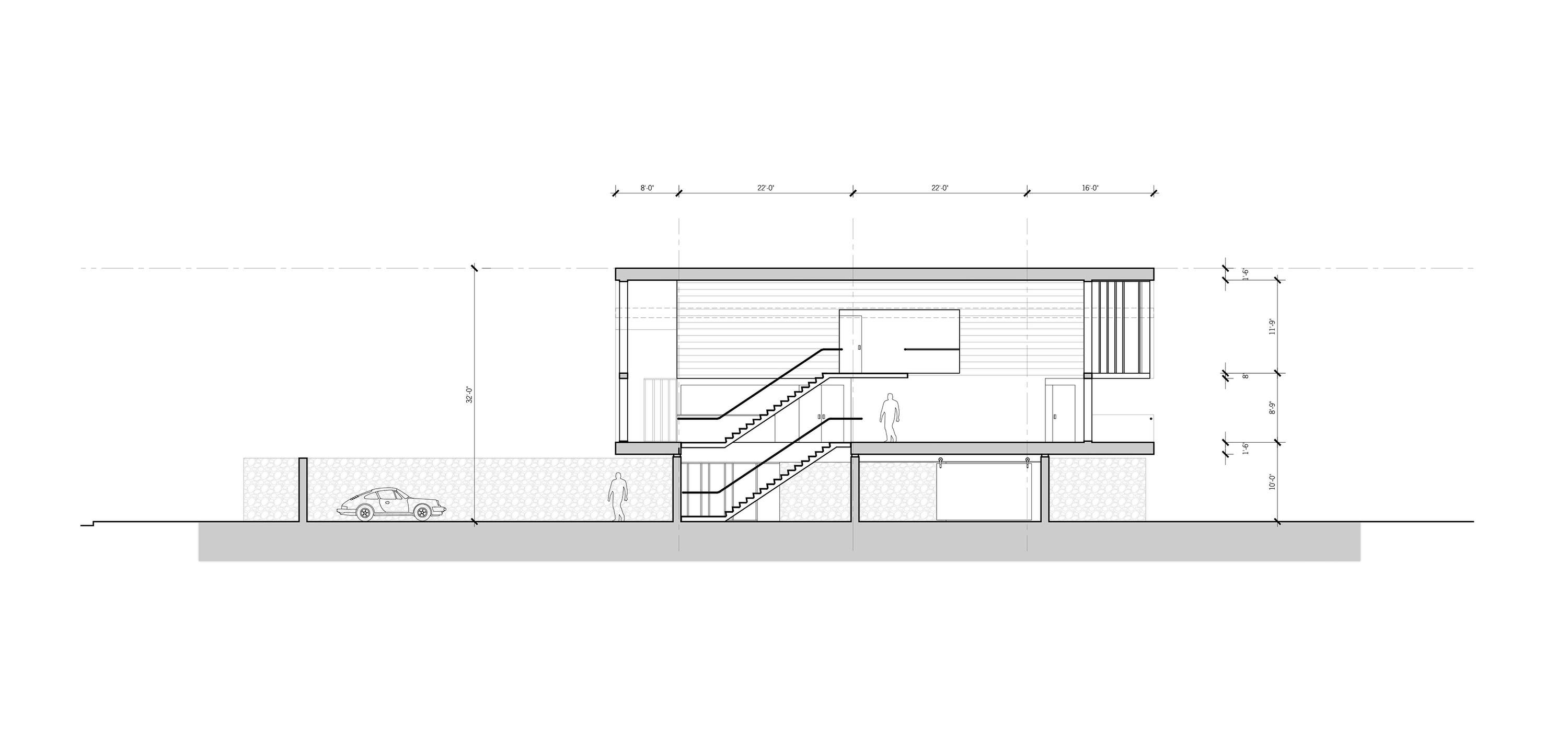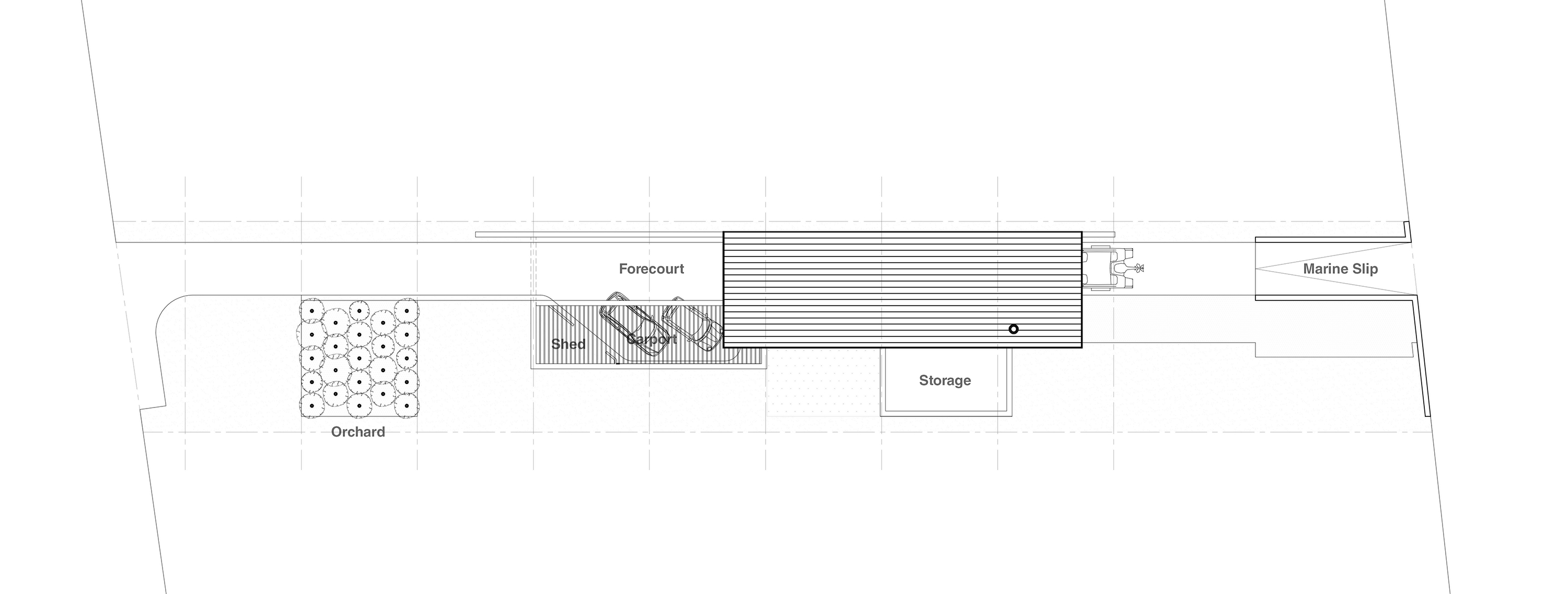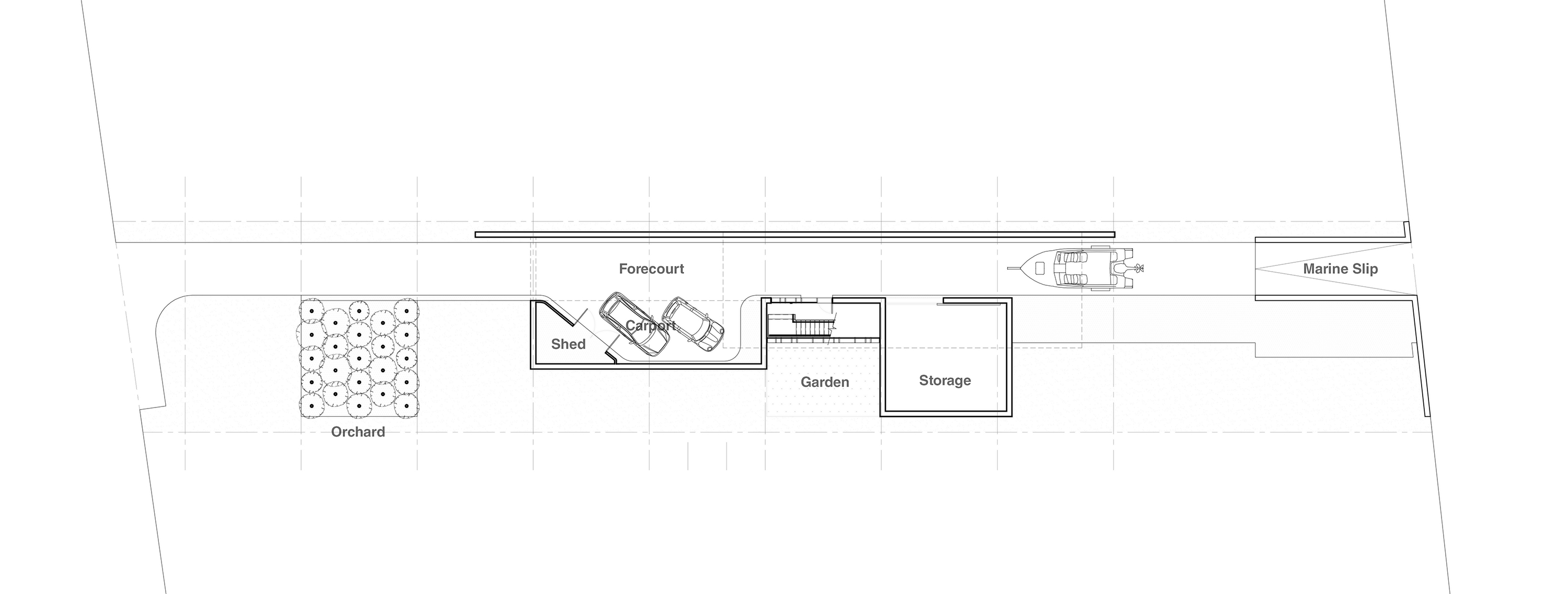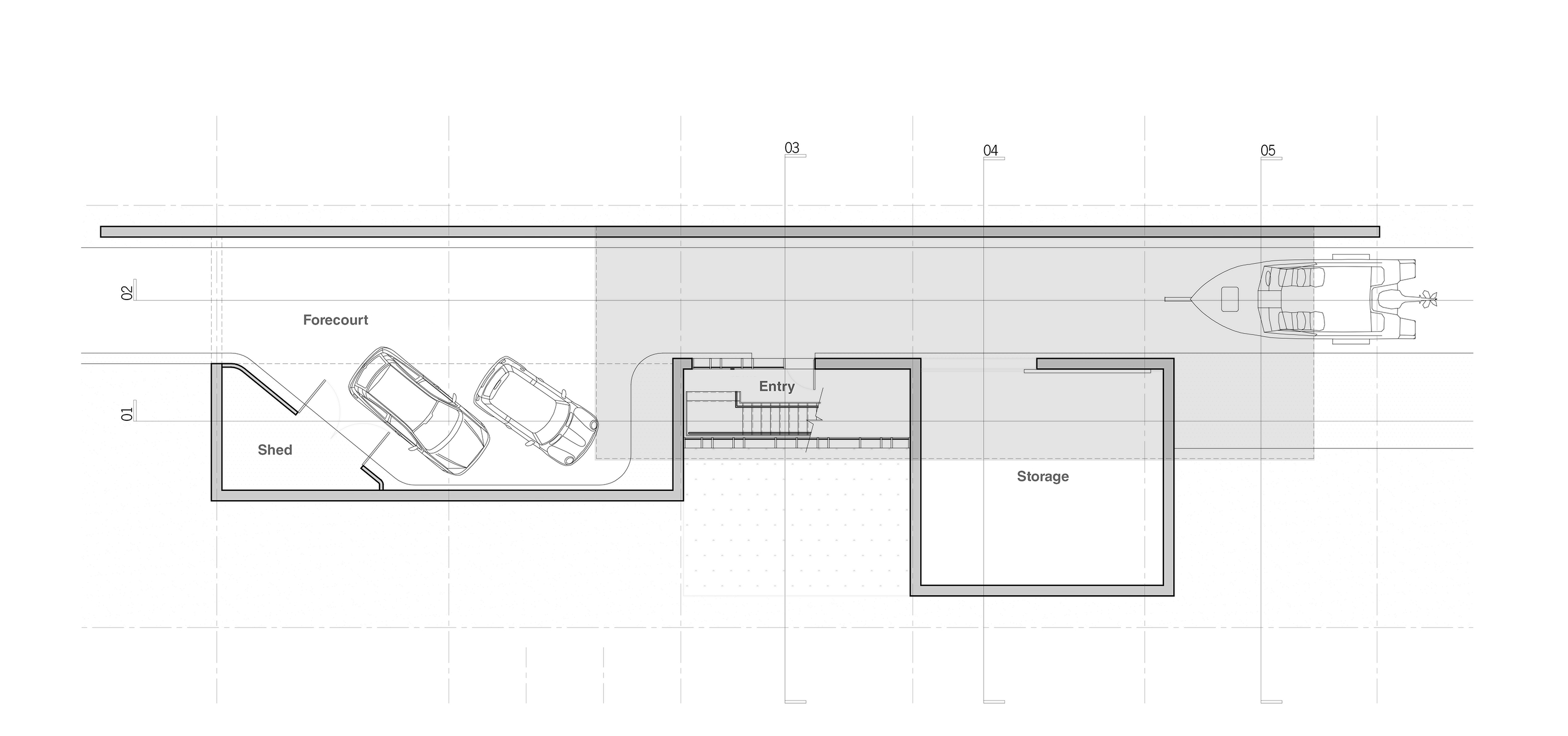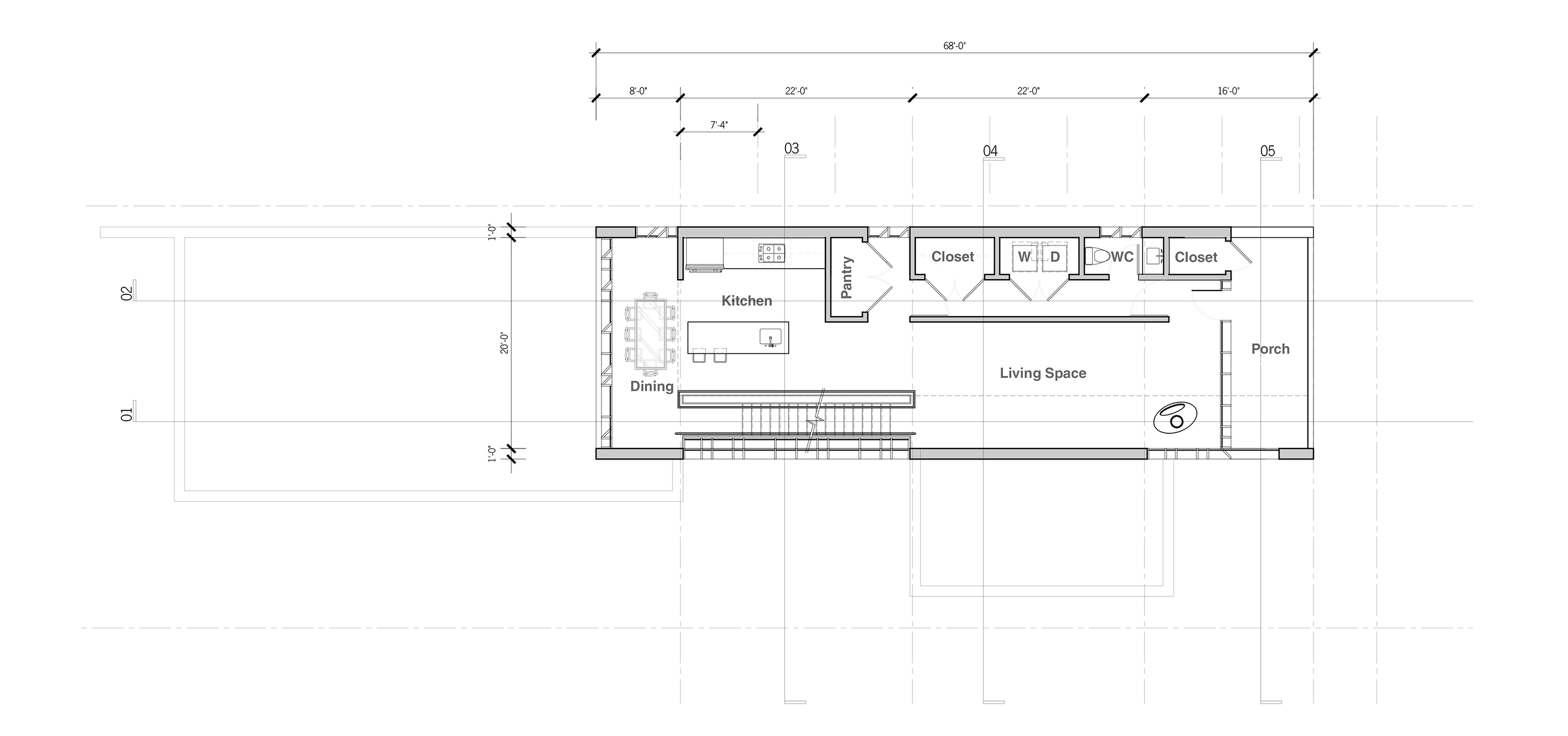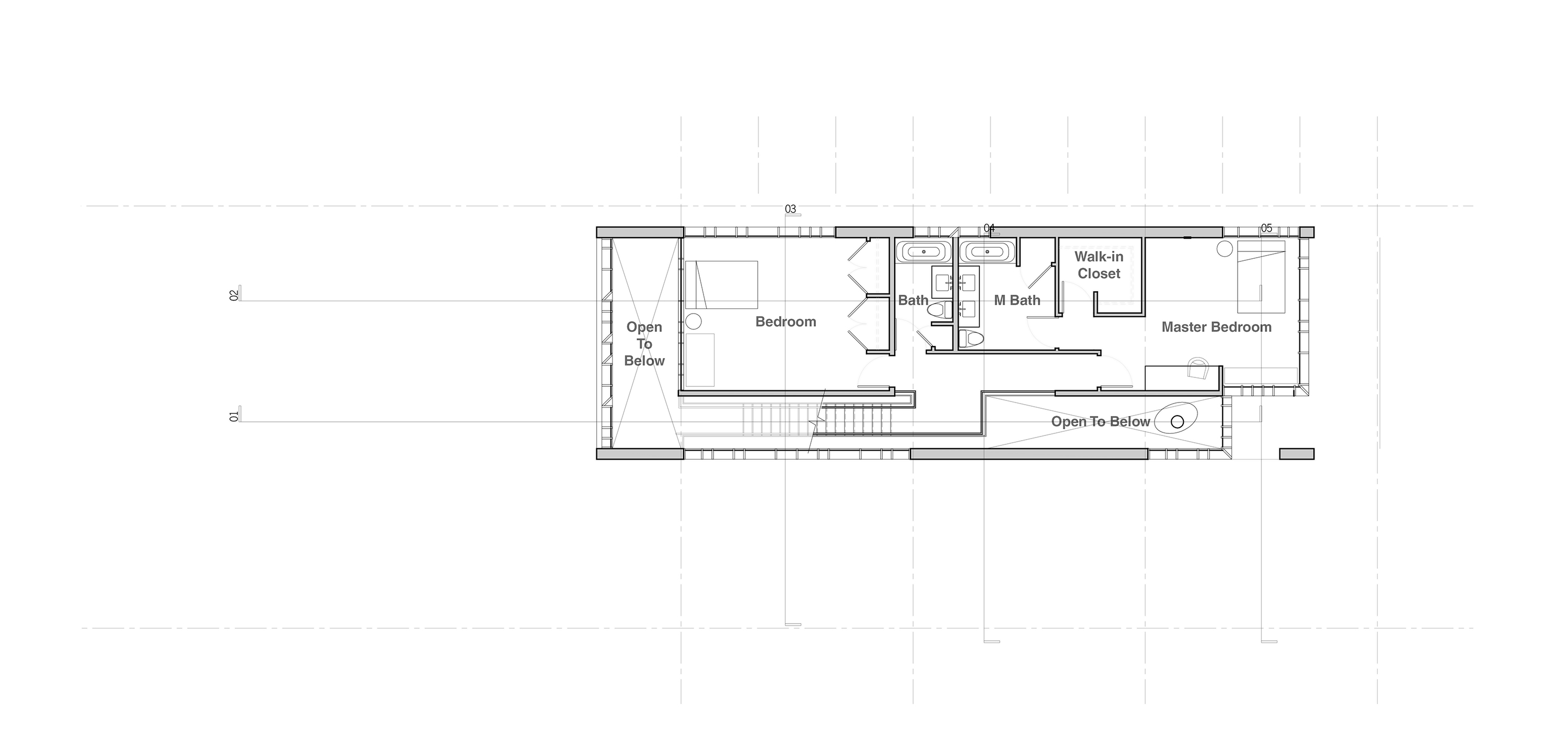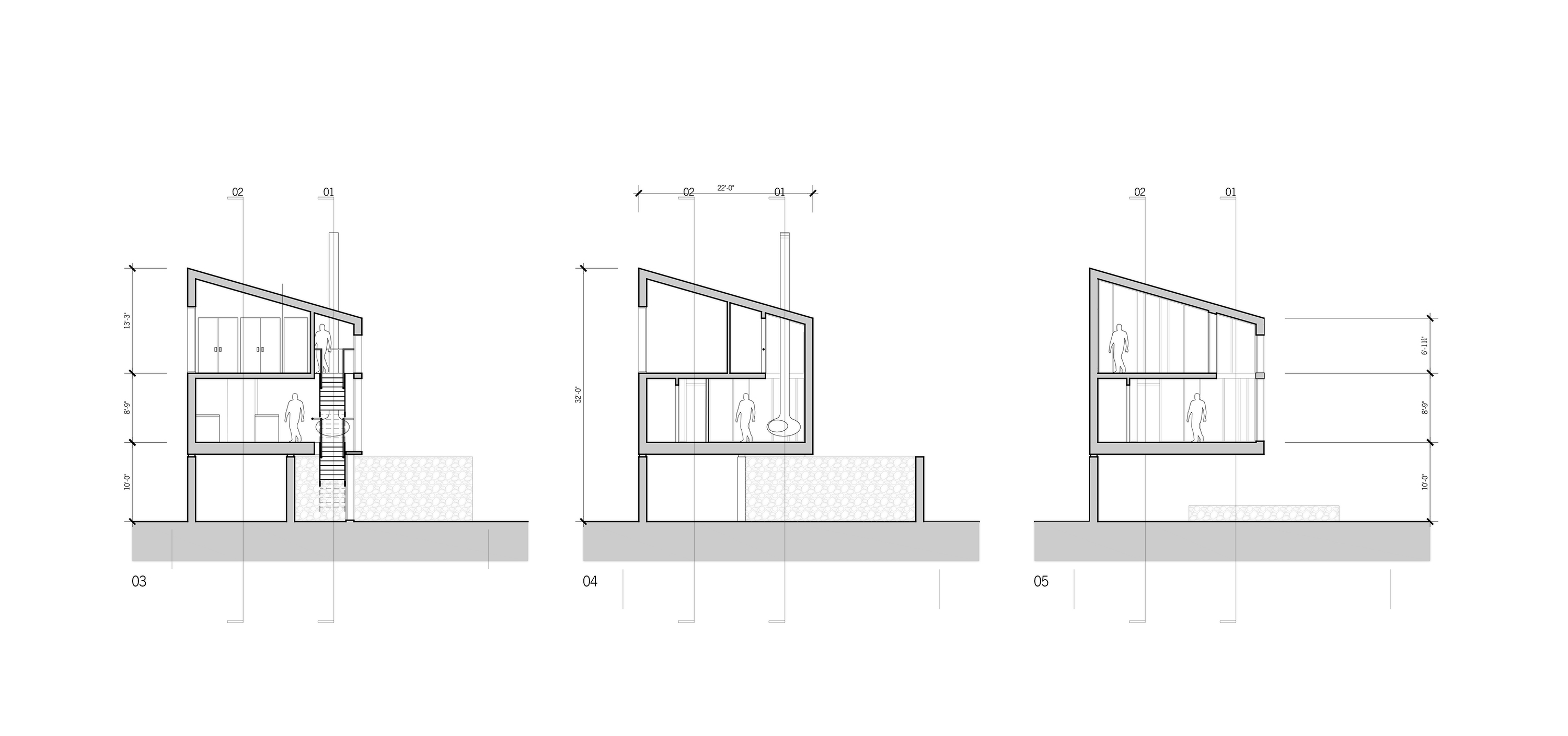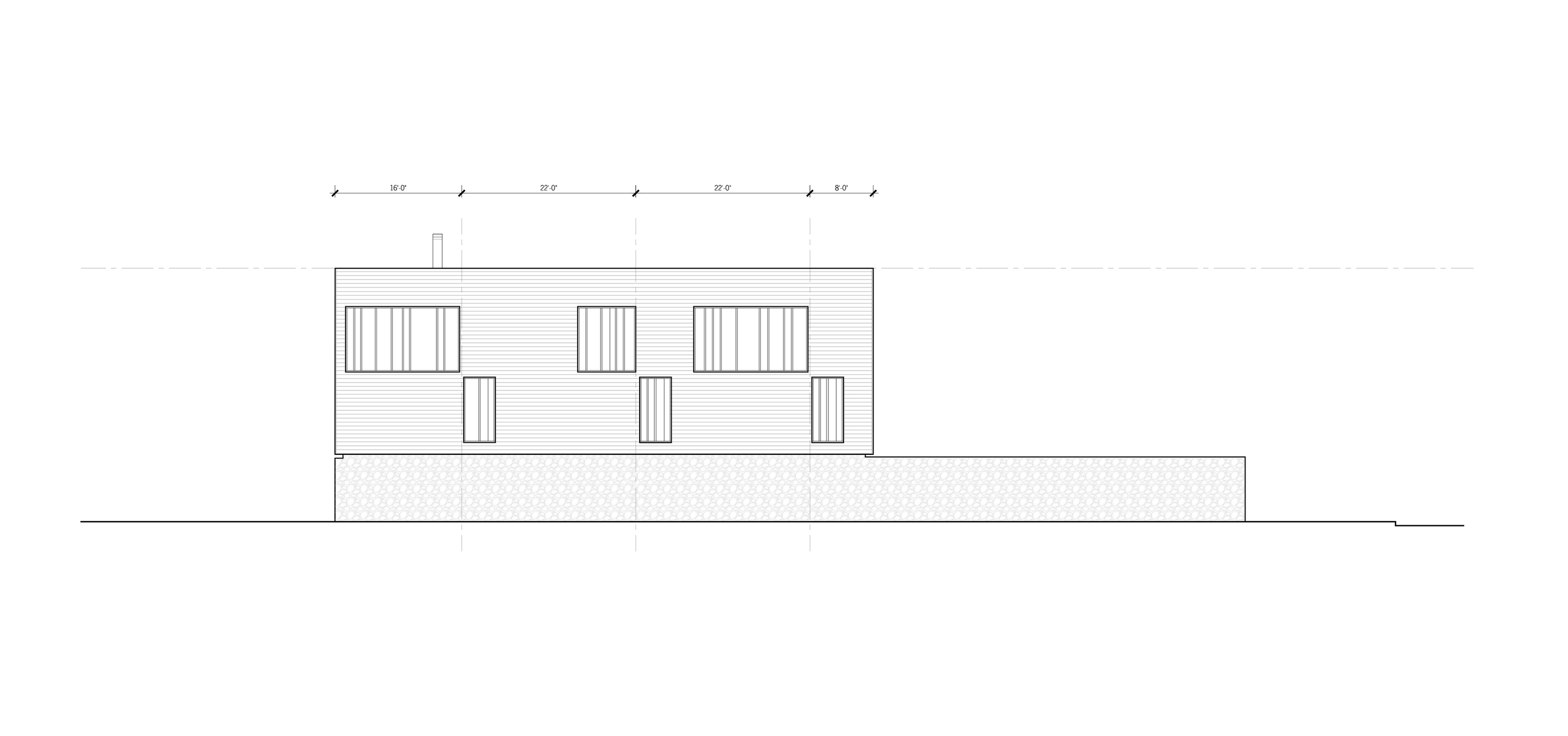.png)

Its 2024. Forms are dead. Get started here.
The Oyster Bar House was designed for a senior couple, the occasional guest, and their small outboard fishing boat. The site is a long skinny property, roughly 200-feet long and about 42-feet wide. Owners of a boat and a slip in the rear of the property, one of the primary requirements forced the house to be lifted, in order for the boat on a trailer to easily pass underneath.
The house is constructed of two parts. A mostly open-air ground floor consisting of two brick walls, one straight and the other undulating like a snake, create a series of outdoor spaces, as well as provide support for the home above. The second part, the actual house, is a timber frame cabin-like structure that rests atop the brick walls. A multi-story stair connects the three stories by linking the entry to the kitchen and finally to the bedrooms above. The house is organized with a simple parti, splitting the plan into a living space and a service bar. The kitchen and public living spaces occupy the second floor while the bedrooms reside on the third floor, in a volume hanging from the ceiling.
The cross-sectional shape of the house is also strategic. Instead of creating a typical gable shaped extrusion, the peak of the roof is position on one side, allowing for more headroom for each bedroom. It also creates an opportunity for a two-story space above the living room.
Designed in collaboration with David Black, AIA of Pratt + Black Architects.

